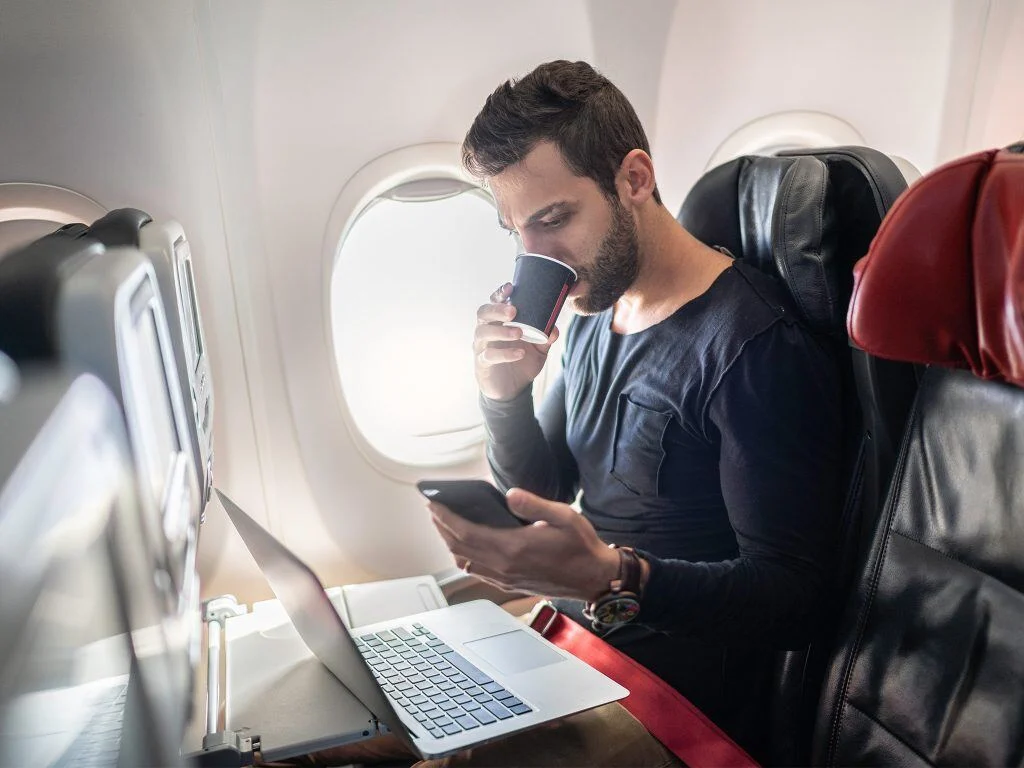
Why In-Flight Wi-Fi and Mobile Are Better Together
As a provider of both services, we wanted to know what passengers actually use when in-flight—so we studied two years’ worth of connectivity data. Through this exercise, we were able to identify a reoccurring trend: when you provide Wi-Fi alongside a mobile service on the same aircraft, you will maximize take rates and get more passengers connected.

Consumers have a lot of choice and variety for connectivity services on the ground. Video streamers, social media checkers, busy businesspeople—there are mobile, data, and Wi-Fi packages for everyone.
Delivering that diversity in the air, though, has been a challenge. Demand for in-flight connectivity has risen exponentially in the past few years.
According to data Panasonic Avionics collected in 2019, 76% of passengers would choose an airline specifically because of the connectivity services they offer.
But do passengers want Wi-Fi, mobile services, or both?
As a provider of both services, we wanted to know what passengers actually use when in-flight—so we studied two years’ worth of connectivity data. Through this exercise, we were able to identify a reoccurring trend: when you provide Wi-Fi alongside a mobile service on the same aircraft, you will maximize take rates and get more passengers connected.
Offering Wi-Fi and Mobile On Board: The Winning Strategy
Panasonic Avionics compared the number of revenue-driving users across 30+ airlines around the world over 2019 and 2020. These airlines were from around the world, representing Europe, Asia, Middle East, and the Americas.
All of the aircraft we studied had connectivity on board. Half of them had only a Wi-Fi connection, and the other half had both Wi-Fi and mobile services. The intention was to understand what type of service passengers chose to connect to.
The metrics that we compared were:


Our Findings
Interestingly, across both years, when comparing aircraft with Wi-Fi
and those with Wi-Fi and the mobile service, the number of Wi-Fi
users did not decrease.
On aircraft offering both services, there were even slight increases
in the number of Wi-Fi users, indicating that the presence of the
mobile service acted as an awareness mechanism and conversion
technique for Wi-Fi.

The Opportunity

And then there are those who have varying levels of comfort with technology. Some may not want to enter their credit card information online to get a connectivity package, while others are happy to use a thumbprint to pay with their digital wallet.
Whoever your passengers are, having a complete connectivity suite as part of your airline’s in-flight entertainment and communications (IFEC) system can help you to offer connectivity options for them to achieve their objectives, which will develop better, more positive passenger experiences for all types of travelers. This, in turn, translates to better net promoter scores and overall higher satisfaction.
There is also the critical financial component: when both services become indispensable to customers, more connectivity revenue opportunities abound. On average, airlines we studied saw 10% higher revenues each month.

How Panasonic Can Help Your Airline
We’re bringing you this information to give you new insights into
demand for connectivity services, and to help you with choosing
options with the best revenue-generating potential.
We do, however, operate within an industry with high sensitivity
to ticket prices. Developing smart, useful, intuitive ancillary
products—including well-designed connectivity packages—is
essential to driving airline connectivity revenues, especially
during the post-pandemic recovery.

The Path Forward
Panasonic Avionics is continuing to invest in mobile and Wi-Fi because we know a cabin capable of handling both means your airline—and your passengers—get the optimal mix of technology.
Offering both maximizes uptake, enhances the passenger experience, and increases your ancillary revenue opportunities. That’s because mobile has a built-in uptake baseline and revenue capability since it leverages global network operators and established roaming business models, which, alongside Wi-Fi, will best support the connectivity wants and needs your passengers have when flying.